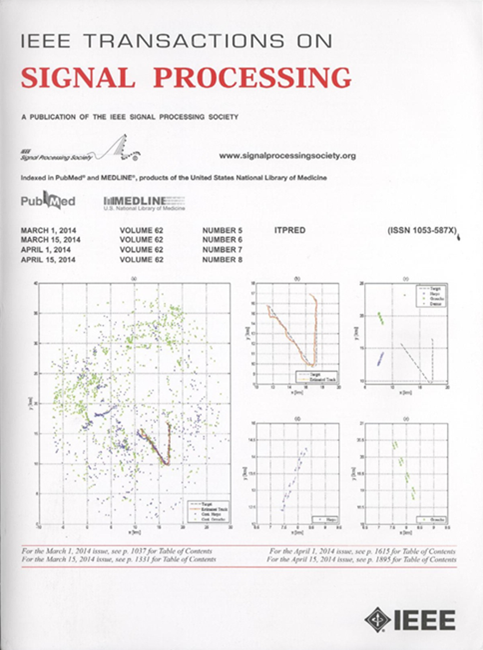自适应τ-Lasso:鲁棒性和Oracle属性
IF 4.6
2区 工程技术
Q1 ENGINEERING, ELECTRICAL & ELECTRONIC
引用次数: 0
摘要
本文介绍了一种新的正则化版本的鲁棒$\tau$回归估计器,用于分析响应变量和协变量(解释变量)中受严重污染的高维数据集。由此产生的估计器,称为自适应$\tau$-Lasso,对异常值和高杠杆点具有鲁棒性。它还包含一个自适应的$\ell_{1}$-norm惩罚项,它可以选择相关变量并减少与大真实回归系数相关的偏差。更具体地说,这个自适应的规范惩罚项为每个回归系数分配了一个权重。对于固定数量的预测器$ p $,我们证明了自适应$\tau$-Lasso具有oracle属性,在相当温和的条件下确保变量选择一致性和渐近正态性。渐近正态性仅适用于与真实支持对应的回归向量的条目,假设真实回归向量支持的知识。通过建立有限样本击穿点和影响函数来表征其鲁棒性。我们进行了大量的模拟,并观察到一类$\tau$-Lasso估计器在污染和未污染的数据设置中都表现出鲁棒性和可靠的性能。我们还通过仿真验证了我们在鲁棒性方面的理论发现。面对异常值和高杠杆点,自适应$\tau$-Lasso和$\tau$-Lasso估计器实现了最佳性能或匹配竞争正则化估计器的最佳性能,在本研究中考虑的几乎所有场景中,在预测和变量选择精度方面损失最小或没有损失。因此,自适应$\tau$-Lasso和$\tau$-Lasso估计器为各种稀疏线性回归问题提供了有吸引力的工具,特别是在高维设置中以及当数据被异常值和高杠杆点污染时。然而,值得注意的是,在所有考虑的场景中,没有一个特定的估计器统一地支配其他估计器。本文章由计算机程序翻译,如有差异,请以英文原文为准。
The Adaptive $\tau$-Lasso: Robustness and Oracle Properties
This paper introduces a new regularized version of the robust $\tau$ $\tau$ $\ell_{1}$ $\ell_{1}$ $ p $ $\tau$ $\tau$ $\tau$ $\tau$ $\tau$ $\tau$
求助全文
通过发布文献求助,成功后即可免费获取论文全文。
去求助
来源期刊

IEEE Transactions on Signal Processing
工程技术-工程:电子与电气
CiteScore
11.20
自引率
9.30%
发文量
310
审稿时长
3.0 months
期刊介绍:
The IEEE Transactions on Signal Processing covers novel theory, algorithms, performance analyses and applications of techniques for the processing, understanding, learning, retrieval, mining, and extraction of information from signals. The term “signal” includes, among others, audio, video, speech, image, communication, geophysical, sonar, radar, medical and musical signals. Examples of topics of interest include, but are not limited to, information processing and the theory and application of filtering, coding, transmitting, estimating, detecting, analyzing, recognizing, synthesizing, recording, and reproducing signals.
 求助内容:
求助内容: 应助结果提醒方式:
应助结果提醒方式:


